
- Permbajtja
- prev
- next
- prev
- next
One does not often think of balloons, zeppelins, and moon bounces as architecture. But inflatable architecture has been around for at least 50 years. In the counterculture of the late ’60s and early ’70s, young architects and architecture students increasingly turned to inflatables as a way to critique the hardness and uncompromising forms of modernism. They were seen as potentially revolutionary structures that allowed for experimentation with space in order to influence social, psychological, and physical cognition through the built environment.
An inflatable building is a structure constructed using two layers of membrane connected together, typically using spars made from the same material. The cavity formed between the layers is pressurized with air producing a rigid structural element which allows large span structures to be achieved. Innovative, revolutionary and often avant-garde, inflatable structures are, by their very nature, an expression of advancement -- a reimagining of traditional forms.

A design by the American firm Jersey Devil, 1969
While many of these were drawings and conceptual ideas never realized, others were deployed at music festivals and as temporary performances. Ant Farm, a radical architecture collective based in Berkeley, California, even went so far as to issue the Inflatocookbook, a guide to the construction and realization of inflatable architecture.

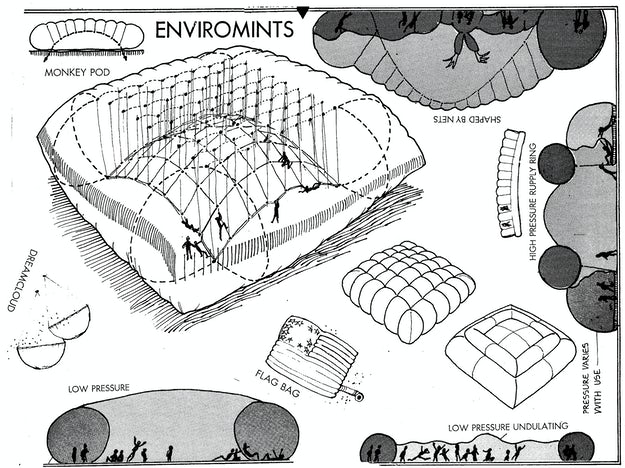
Ant Farm, Clean Air Pod (1970) and Inflatocookbook (1971)
Though this practice never achieved mainstream appreciation during its early days, many prominent firms such as Coop Himmelb(l)au counted inflatables among their first projects. Inflatable architecture soon saw a renaissance in the ’90s and ’00s, with OMA incorporating a giant balloon into their Serpentine Pavilion.
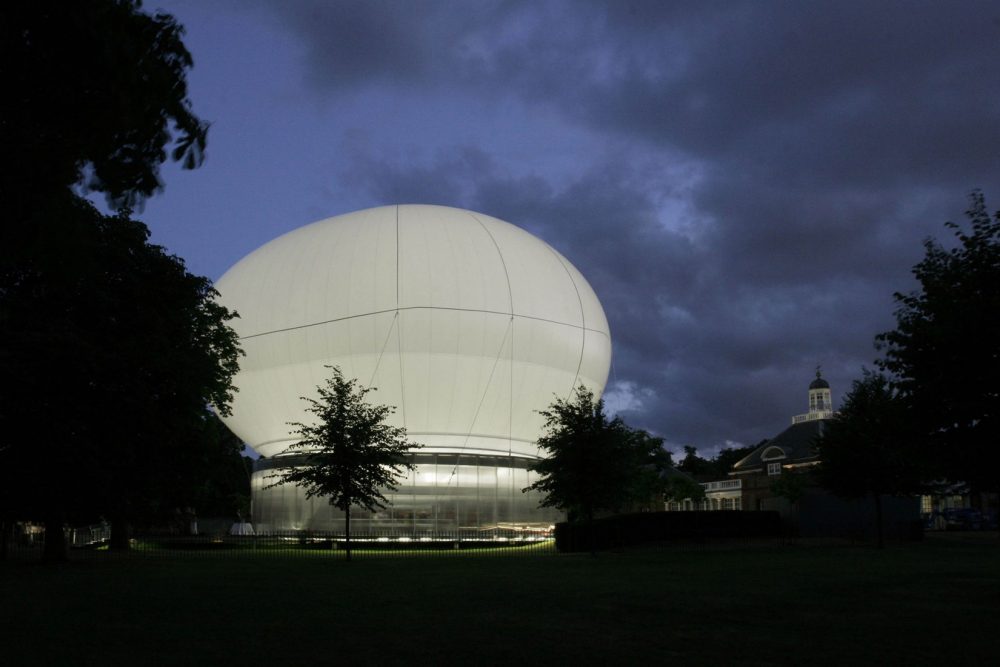
The Serpentine Pavilion 2006 is co-designed by architect Rem Koolhaas and structural designer Cecil Balmond.
Inflatable structures and inflatable buildings are used in many ways including membrane roofs and covers, sails, buildings and pavilions, airships, furniture, airspace structures, boats, escape slides, security mattresses, swimming pools, coverings, games and castles, air bags and many other applications. Examples include an inflatable church and an inflatable pub. Here are some of them:
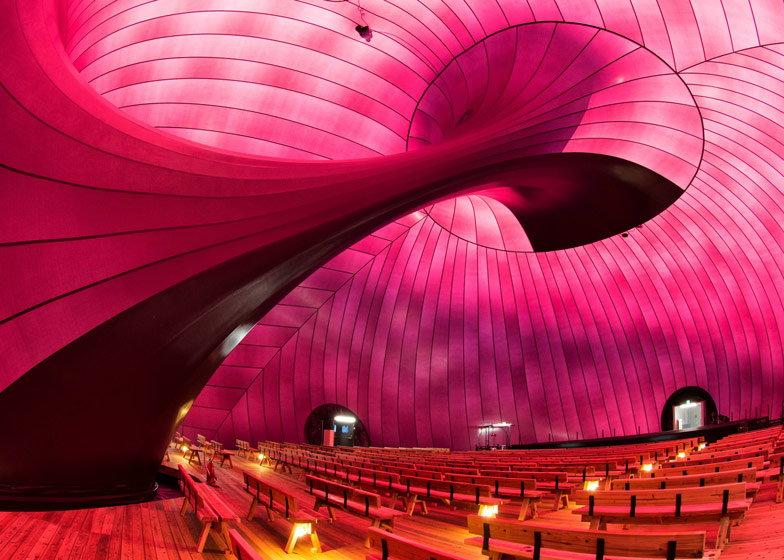
Ark Nova - Arata Isozaki & Anish Kapoor
Japanese architect Arata Isozaki teamed up with Indian-born Anish Kapoor to design the orb-like structure, which is modelled on the inflatable Leviathan sculptures created by the artist for a past exhibition in Paris. The 500-seat performance venue is designed to stage performances ranging from orchestras and chamber music to jazz, theatre, dance and art. The inflatable mobile concert hall was built in 2013, two years after a major earthquake and tsunami hit Japan and it was named the Project Ark Nova, or 'new ark', with the hope that it will become a symbol of recovery immediately after the great earthquake disaster.
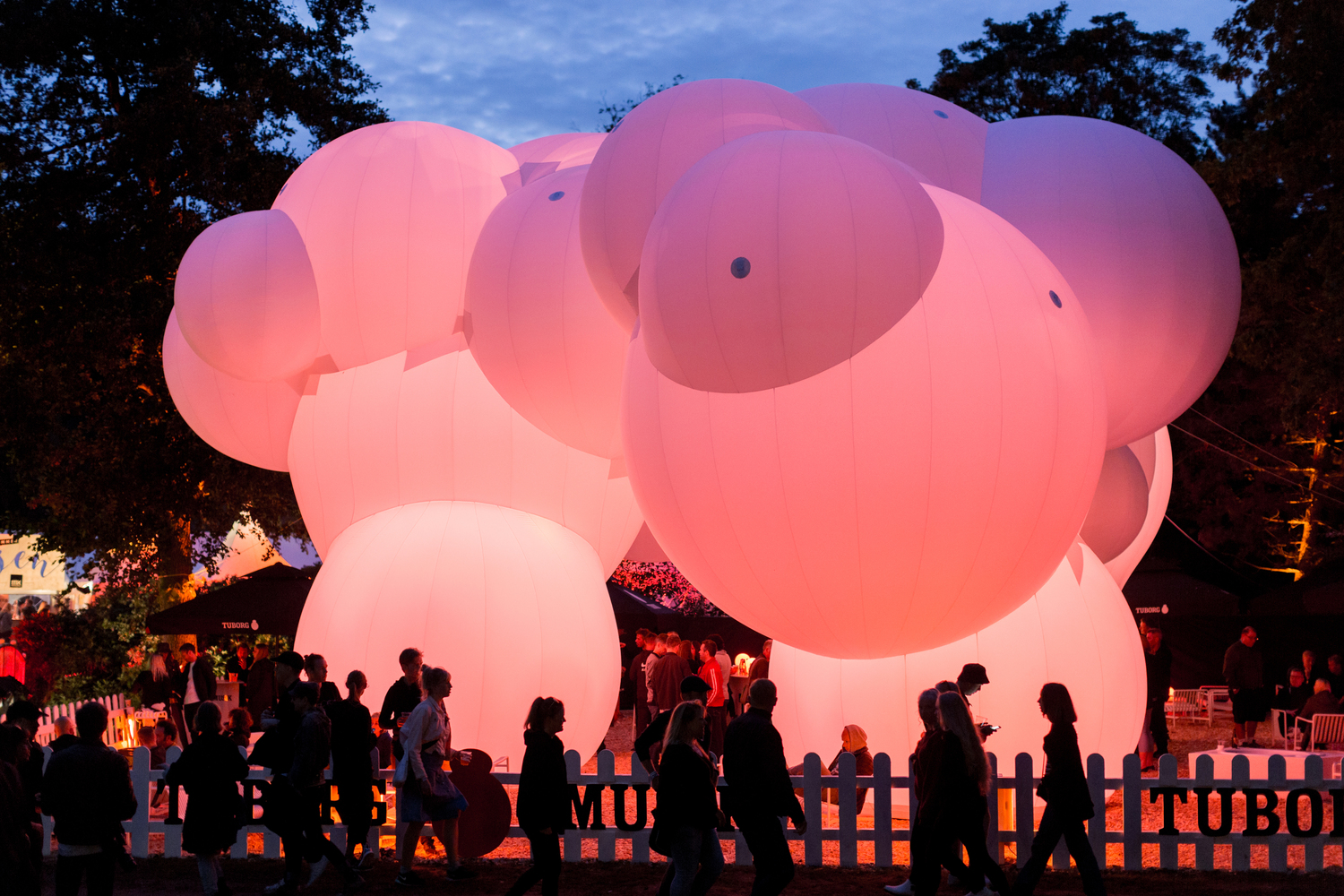
SKUM Bubble Pavilion, Denmark - BIG Architects
BIG Architects designed an inflatable mobile pavilion to be displayed at three Danish events, including its original site at the Roskilde Festival 2016. Known as SKUM (Danish for foam), the structure met the challenge of creating an installation that has the ability to be both permanent and fully transportable by creating a whimsical, bubble-like form made from the same material as bouncy castles that can be blown up in just 7 minutes.
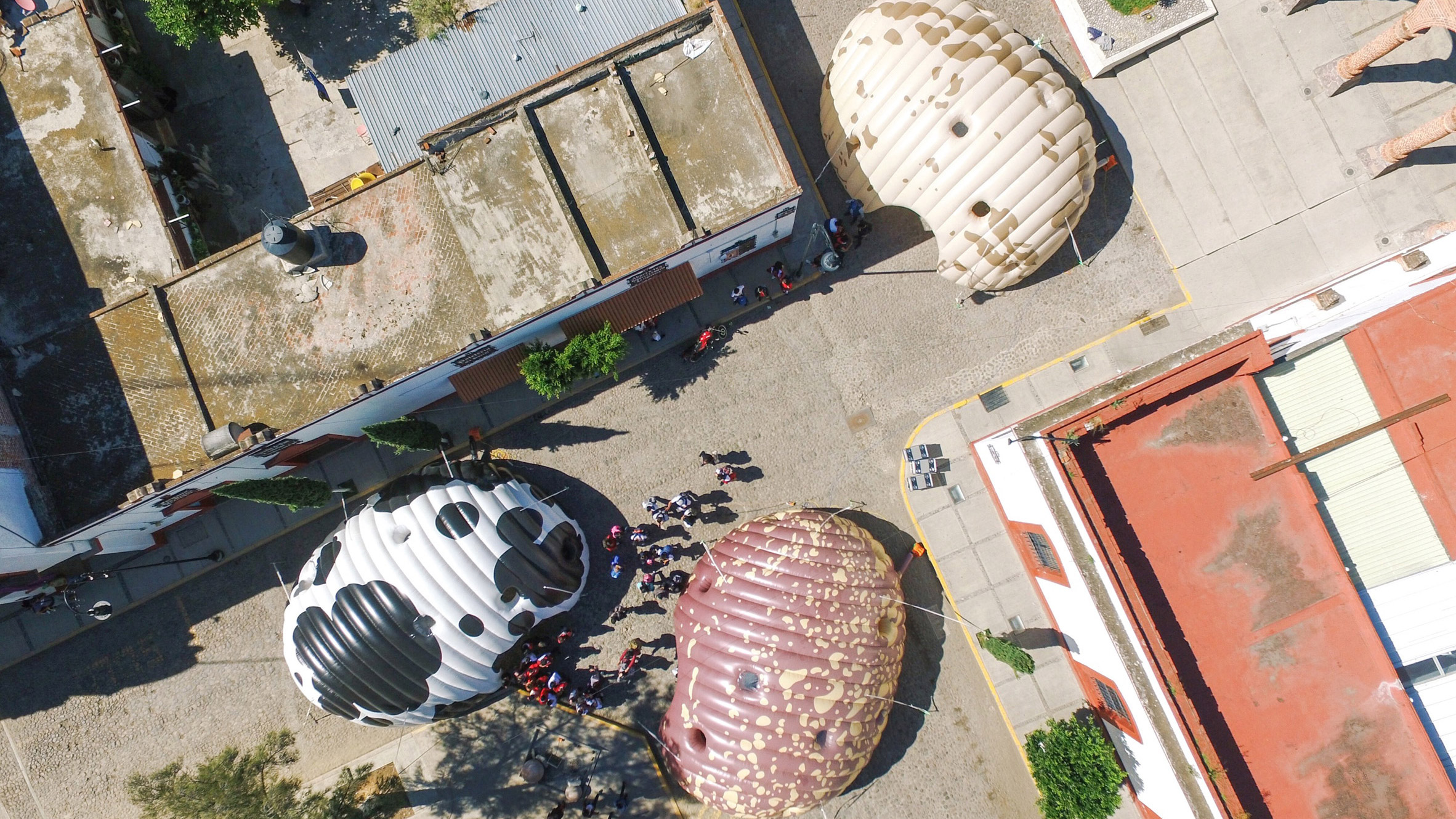
Inflatable Traveling Museum, Mexico - Estudio 3.14
Mexican designer Norberto Miranda and architecture firm Estudio 3.14 have designed inflatable structures that look like massive beans to host an exhibition that celebrates the traditions and intersection of Mexican gastronomy, music and culture. The interiors of each structure are intentionally blank to allow for installation of the exhibition.
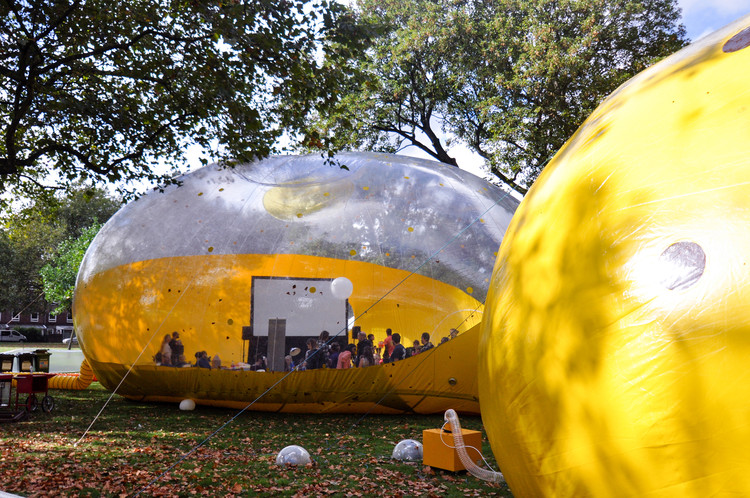
Second Dome, London, United Kingdom - DOSIS
Second Dome is a pneumatic living structure designed by the Spanish architecture practice DOSIS for creative workspace provider Second Home. On 1 October 2016, Second Dome was inflated in London Fields in East London to host free community events for local families and children. Second Dome is a reconfigurable space that can transform within minutes from a single 65 m2 bubble to a multi-room structure with over 400 m2 and 8 meters high. No other type of structure can be assembled so quickly and also have the capacity to span large areas with a thickness of less than a millimeter. It is a technologic artefact that automatically responds to wind and pressure and that needs extremely low quantities of energy for fabrication and assembly.
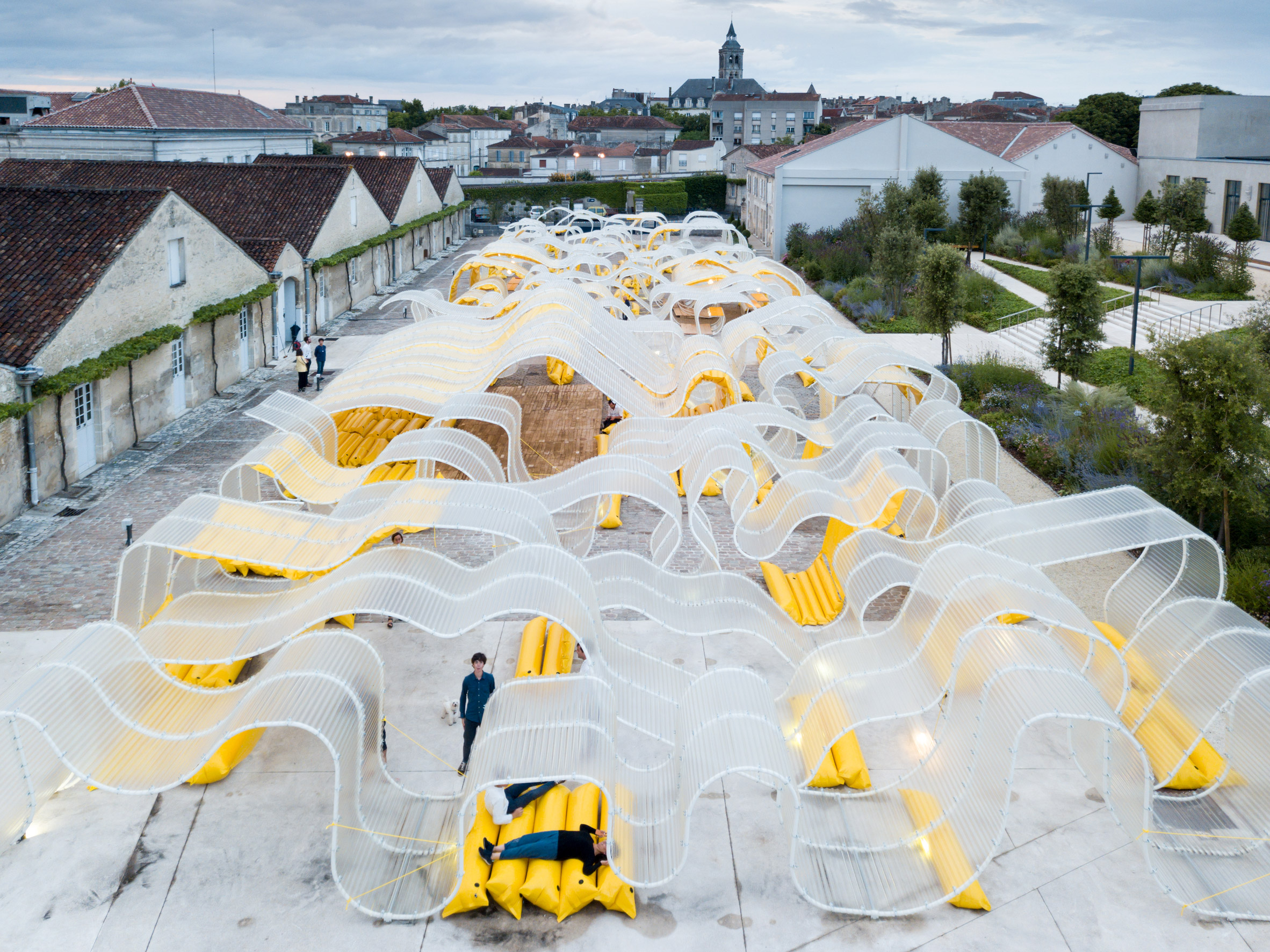
Martell Pavilion - SelgasCano
The site-specific commission of the Fondation d’entreprise Martell, the Pavillon Martell de SelgasCano, is a new, multifaceted architectural project created by Spanish architects SelgasCano. The first project in France by the duo of José Selgas and Lucìa Cano, this exterior pavilion is comprised of modules constructed from hi-tech materials, which will house specific activities prefiguring the Foundation’s future schedule of events. Inflatable seats installed in the structure, attached by straps, will allow visitors to sit, lean, or stretch out in the context of workshops, concerts, presentations, conferences, markets, games, moments of relaxation, wanderings, etc.
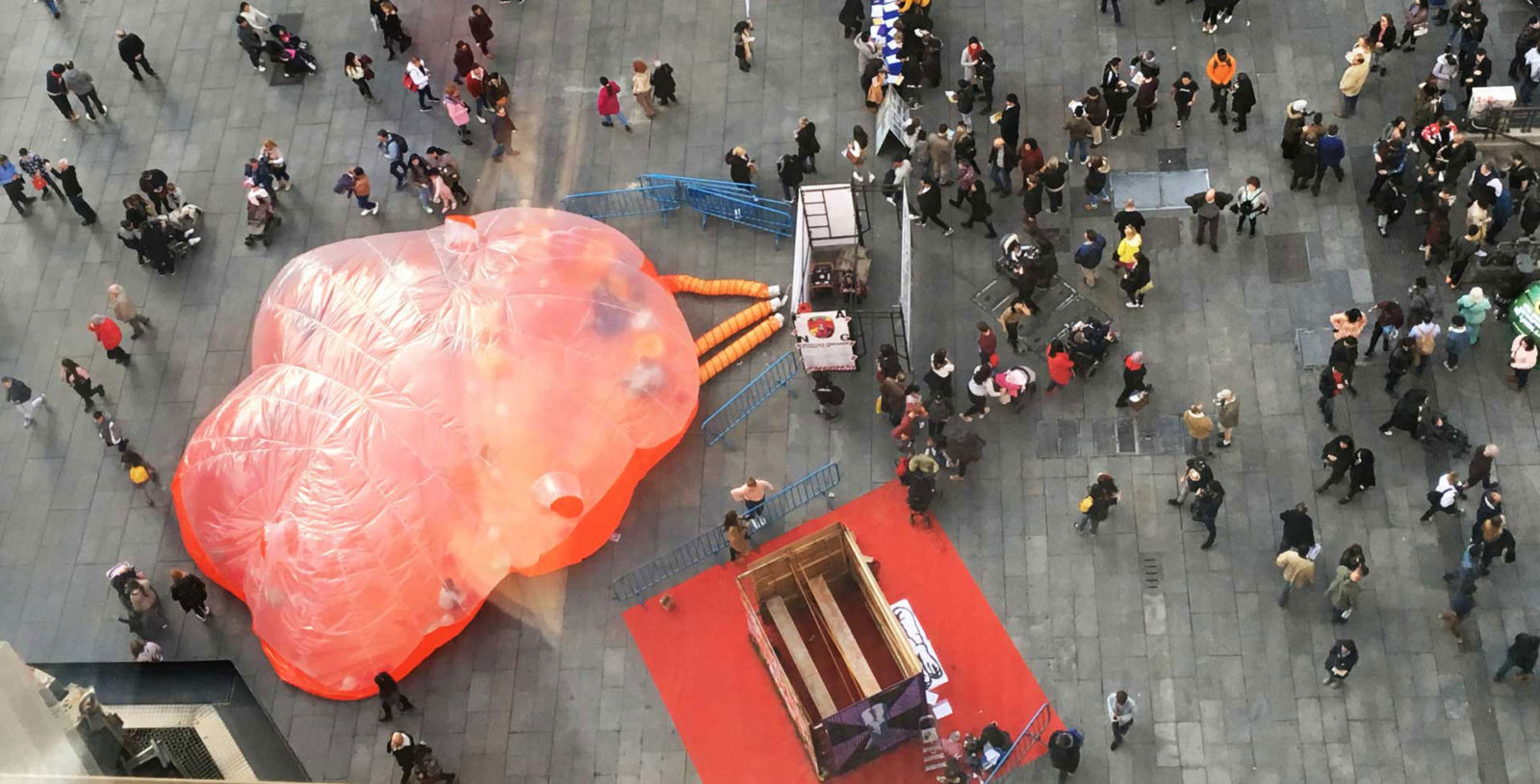
This is my Square, Madrid, Spain - Conjuntos Empáticos
The plastic membrane of the structure serves as a medium for hosting collective interventions or simply moments of relaxation, such as a small concert, games or collective drawings, thus encouraging the social as a form of interaction. In this way, the inflatable structures behave like organisms capable of awakening the restlessness of the passer-by due to their lightness, materiality and surprise effect, characteristics that guarantee a sensorial experience propitiated by the environment and the public space. An atmosphere foreign to the urban space in which it is located, which produces the dissociation between the scale of the city and of a domestic area.
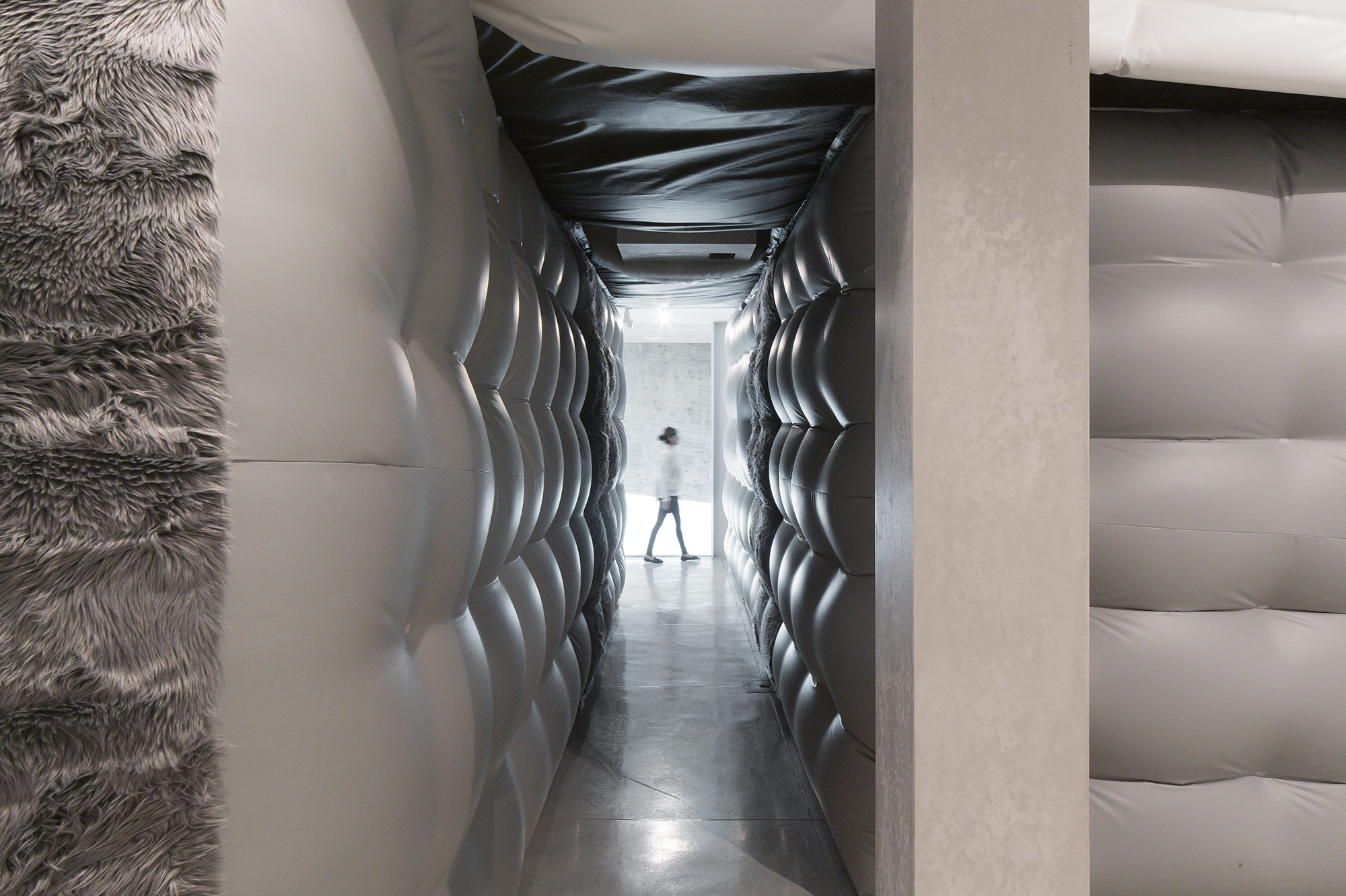
Wall to Wall Floor to Ceiling - Alex Schweder
Commissioned by the Tel Aviv Museum of Art, this work set in the horizontally expansive but vertically compressed architecture gallery emphasizes the inherent tension this creates through twelve inflatable forms continually pushing one another out of the way. The six attached to the ceiling are white and the six on the floor are grey. As they asynchronously push each other out of the way, the space reconfigures along with the spatio-behavioral instructions communicated to visitors. Sections of the inflatables are furry enticing people to interact with the protrusions suggesting doors, seats and beds constantly in a state of flux.
Source: architizer.com; divisare.com